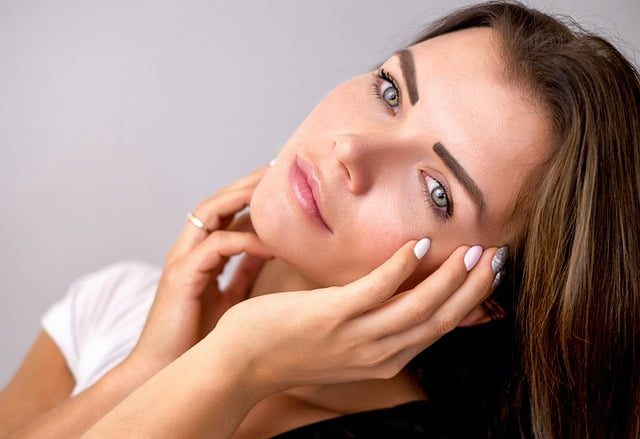Hyaluronic acid has gained immense popularity in the skincare industry for its numerous benefits when it comes to treating acne and acne scars. Acne is a common skin condition that affects millions of people worldwide, causing not only physical discomfort but also emotional distress. Acne scars, on the other hand, can leave long-lasting marks, affecting an individual’s self-esteem and confidence.
Fortunately, hyaluronic acid has emerged as a promising ingredient in combating acne and reducing the appearance of acne scars. This article will delve into the benefits of hyaluronic acid for acne and acne scars, discuss potential side effects, and provide insights on how to use this remarkable skincare ingredient effectively.
is hyaluronic acid safe for acne And Acne Scars?
Hyaluronic acid is generally considered safe for acne and acne scars. It is a naturally occurring substance in the skin that helps retain moisture, improve elasticity, and promote wound healing.
When applied topically or injected into the skin, hyaluronic acid can provide hydration and plumping effects, helping to reduce the appearance of acne scars and smooth out the skin’s texture. Additionally, it does not clog pores or cause acne breakouts.
However, it is important to note that everyone’s skin is unique, and individual reactions may vary. It is advisable to consult with a dermatologist or skincare professional to determine the best course of treatment for acne and acne scars.
benefits of Hyaluronic Acid for Acne And Acne Scars.
1. Hydration and Moisturization.
One of the primary benefits of Hyaluronic Acid is its exceptional ability to retain moisture. By attracting and holding water molecules, it effectively hydrates the skin, preventing excessive dryness and flakiness often associated with acne treatments. This hydration helps restore the skin’s natural moisture barrier, promoting overall skin health and reducing the risk of further breakouts.
2. Reduced inflammation and redness.
Acne is often accompanied by inflammation and redness due to the body’s immune response to bacterial infection. Hyaluronic Acid possesses anti-inflammatory properties that can calm irritated skin and alleviate redness. By soothing the skin, it aids in reducing the appearance of active acne and promoting a more even complexion.
3. Enhanced wound healing.
Acne breakouts can cause damage to the skin, leading to scars. Hyaluronic Acid accelerates the healing process by promoting tissue repair and regeneration. It helps to stimulate collagen production, a vital protein responsible for maintaining skin structure and elasticity. By encouraging collagen synthesis, Hyaluronic Acid aids in fading acne scars, making them less noticeable over time.
4. Improved skin texture.

Acne scars often leave behind uneven skin texture, including indentations or raised areas. Hyaluronic Acid’s ability to plump and hydrate the skin can help smooth out these imperfections, resulting in a more refined and even skin surface. Regular use of Hyaluronic Acid can contribute to a significant reduction in the visibility of acne scars, promoting a smoother, more youthful complexion.
5. Compatibility with other acne treatments.
Hyaluronic Acid is well-tolerated and compatible with various acne treatment options. Its non-comedogenic nature means it does not clog pores or exacerbate acne breakouts. Whether used alongside topical medications, oral treatments, or other skincare products, Hyaluronic Acid can complement and enhance the effectiveness of these treatments, providing additional benefits for acne-prone skin.
Side Effects of Hyaluronic Acid.
1. Allergic reactions.
Although rare, some individuals may develop an allergic reaction to hyaluronic acid. Symptoms may include itching, redness, swelling, or hives. In severe cases, anaphylaxis, a life-threatening allergic reaction, may occur. If any allergic symptoms are experienced, immediate medical attention should be sought.
2. Infection.
When hyaluronic acid is injected or used during surgical procedures, there is a small risk of infection. This risk can be minimized by ensuring proper sterilization techniques and following post-procedure care instructions. Signs of infection include increased pain, redness, swelling, or drainage from the treated area.
3. Bruising and swelling.
After hyaluronic acid injections, it is common to experience some level of bruising and swelling at the injection site. This is usually temporary and resolves within a few days or weeks. Applying ice packs and avoiding blood-thinning medications can help minimize these side effects.
4. Discoloration.
In rare cases, individuals may notice a bluish tint or discoloration around the treated area. This is known as the Tyndall effect and occurs when hyaluronic acid is injected too superficially. It can be corrected by a skilled medical professional through the use of hyaluronidase, an enzyme that breaks down hyaluronic acid.
5. Lump formation.
Occasionally, hyaluronic acid injections can cause the formation of small lumps or bumps under the skin. These can be the result of improper injection techniques or the body’s reaction to the substance. Massage or the use of hyaluronidase can help smooth out these lumps.
6. Migration and asymmetry.
In some cases, hyaluronic acid may migrate from the site of injection, causing asymmetry or unevenness in appearance. This can be corrected by a medical professional through additional injections or adjustments.
7. Dryness or flaking.
Hyaluronic acid is known for its hydrating properties, but in rare instances, it can cause dryness or flaking of the skin. This is usually temporary and can be managed with the use of moisturizers or hydrating serums.
| 💡 Tips Verywel Fit.com It is crucial to consult with a qualified healthcare professional before undergoing any hyaluronic acid treatments or procedures. They can evaluate your medical history, discuss potential risks, and determine the most appropriate course of action to minimize the likelihood of experiencing side effects. |
How to Use Hyaluronic Acid for Acne And Acne Scars?
1. Cleanse your face.
Start by gently cleansing your face with a mild, non-comedogenic cleanser. This helps remove any dirt, oil, or impurities from your skin, preparing it for the next steps.
2. Tone your skin.
After cleansing, use a gentle toner to balance the pH level of your skin. Look for a toner that is alcohol-free and contains soothing ingredients like chamomile or green tea extract.
3. Apply hyaluronic acid serum.
Once your skin is clean and toned, it’s time to apply the hyaluronic acid serum. Look for a serum with a high concentration of hyaluronic acid to maximize its effectiveness. Take a few drops of the serum and gently massage it onto your face, focusing on areas prone to acne or acne scars.
4. Allow absorption.
Give the hyaluronic acid serum some time to absorb into your skin. The lightweight texture of hyaluronic acid allows for quick absorption, so you don’t have to wait too long before moving on to the next step.
5. Moisturize.
After the hyaluronic acid serum has absorbed, apply a moisturizer suitable for acne-prone skin. Look for a lightweight, oil-free moisturizer that won’t clog your pores. This step helps lock in the hydration provided by the hyaluronic acid and keeps your skin adequately moisturized.
6. Apply sunscreen.
It is crucial to protect your skin from harmful UV rays, especially when using any active skincare ingredients. Choose a broad-spectrum sunscreen with an SPF of at least 30 and apply it generously on your face, neck, and any exposed areas.
7. Repeat regularly.
Consistency is key when using hyaluronic acid for acne and acne scars. Incorporate this skincare routine into your daily regimen, applying hyaluronic acid serum both in the morning and evening for optimal results.
8. Be patient.
Results may not be immediate, as with any skincare product. It takes time for hyaluronic acid to work its magic and improve acne-prone skin. Consistent use over a sustained period will yield the best results, so be patient and give your skin the time it needs to show improvement.
| 💡 Tips Verywel Fit.com Remember, while hyaluronic acid can be beneficial for acne and acne scars, it is always recommended to consult with a dermatologist if you have severe or persistent acne. They can guide you with a personalized skincare routine and recommend additional treatments if necessary. |
Frequently Asked Questions.
1. Is hyaluronic acid good for oily skin?
Yes, hyaluronic acid is generally good for oily skin as it provides hydration without clogging pores.
2. Is the ordinary hyaluronic acid good for acne
Yes, hyaluronic acid can be good for acne as it helps to hydrate the skin and promote healing. However, it is not a direct treatment for acne and should be used in conjunction with other acne-fighting products or treatments.
Bottom Line.
There is currently no direct scientific evidence to suggest that hyaluronic acid causes acne. While it is true that hyaluronic acid is a substance naturally found in the skin and can be used in various skincare products, it does not appear to be a primary cause of acne. Acne is a complex skin condition influenced by factors such as genetics, hormones, and excessive oil production. Therefore, individuals prone to acne should consider a comprehensive approach to managing their condition, including proper skincare, a healthy lifestyle, and seeking professional advice if needed.
How we reviewed this article:
Our team of experts is always monitoring the health and wellness field, ensuring that our articles are updated promptly as new information emerges. See Our Editorial Process
Nov 16, 2025
Written By: Dr. Julia Carroll
Reviewed By: Precious-Rutlin
Written By: Dr. Julia Carroll
Reviewed By: Precious-Rutlin

 Workout
Workout
 Meditation
Meditation





 Contact Us
Contact Us














